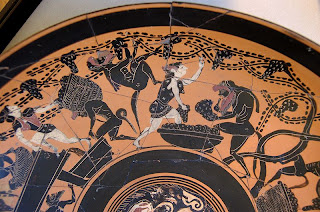
MacNeil writes, “Complexity is not a thing but a phenomenon. […] Complexity is more like a force that pulls you into a wine and impels you to repeatedly return for another smell and sip because each time you do, you find something new.” Much more than the layering of different flavors, complexity is the push and pull of novelty and pattern, of surprise and gratification. As a phenomenon, complexity is not so much an expression of a wine’s natural qualities as it is the perception of our own qualities in a wine. It is our consciousness that allows us to perceive wine as complex; and while certain desirable mutations may have been selected over centuries of grape growing, those qualities were produced for us by the grapes. Each mutation in a grapevine has been an appeal to our desires to ensure we continue its propagation.
At the beginning of the summer, I opened a 1998 magnum bottle of Zinfandel to celebrate the new condo my family friends Brad and Deb had bought in Santa Cruz (it seemed fitting to welcome these East-coasters with a wine made from a grape that is decidedly Californian). I told Brad, a neuropsychologist, that the grapes were grown in volcanic soil near Clear Lake. We entered into a discussion about differences in cultivars, how the soil and climate preference of grapes mimics our own preference for certain flavors and aromas, and as the conversation meandered from varietal to varietal, I sensed that our own evolution is not unlike that of the grapevine. Brad explained the neural dynamic of vines, the genetic crossbreeding and cloning that occurred long before any varietal names were prescribed. Mastery of the inner workings of wine is a prodigious feat, and when we drink, we sense its complexity.




